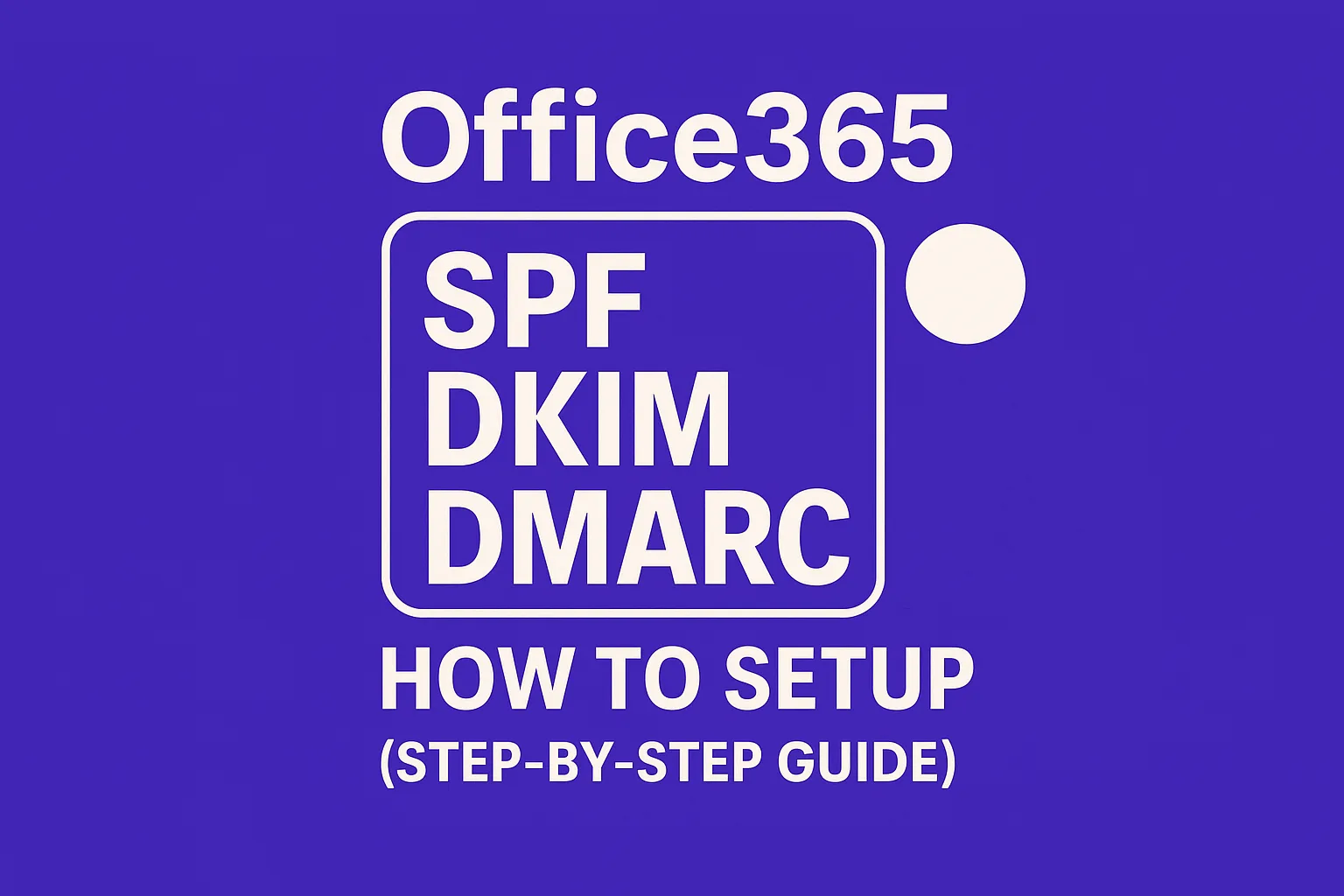What “blacklisted” really means
Your emails can fail to reach inboxes in two main ways: they can be blocked entirely, or they can land in spam folders. Blacklisting can trigger both outcomes.
Blacklists exist to protect users from undesirable or potentially harmful emails. Maintained by public organizations and private companies, these blacklists flag the IP addresses and domains that are known to send unwanted or risky messages. In addition to public blacklists, mailbox providers like Gmail and Outlook also operate their own internal systems to identify and block problematic senders.
You’ll notice the effects of blacklisting through an increase in hard bounces, deferred emails, or your messages being delivered to recipients’ spam folders. This can cause significant issues if you’re sending emails for outreach or sales, as it disrupts your email marketing efforts and reduces campaign performance. The good news: you can test, confirm, and recover from blacklisting with a structured approach.
Quick signs you might be blacklisted
- A sudden spike in failed email deliveries (known as 5xx bounces) from multiple email providers.
- A rise in email deferrals, messages that get delayed with try again later responses.
- SMTP error messages mentioning “policy” or “abuse.”
- Gmail or Microsoft Postmaster dashboards showing red or gray alerts.
Don’t rely on guesswork. A short, structured check will confirm if you’re actually blacklisted.
How to check if your emails are blacklisted
1) Gather your sending details
- Identify your sending IP addresses by checking your SMTP logs or your email service provider’s control panel.
- Take note of your sending domain, as well as any tracking or link domains you use in emails.
- Save samples of recent bounce messages, including the full SMTP error text.
2) Run IP and domain lookups
Use a trusted multi-RBL (Real-time Blackhole List) checker to test your IPs and domains individually. Be on the lookout for hits on well-known reputation lists. Keep in mind that some blacklists track URLs found in your emails, not only your IPs, so be sure to check your link and image domains too.
3) Check mailbox provider dashboards
- Use Gmail Postmaster Tools to review your domain’s reputation and spam rate.
- Use Microsoft SNDS for insights into your IP’s reputation and spam trap activity.
These dashboards can validate whether your blacklisting issue is widespread or specific to certain email providers.
4) Read the SMTP codes
SMTP error codes provide information about email delivery failures. For example, an error code mentioning “policy” often indicates that the email was blocked due to the sender’s poor reputation. Temporary error codes are usually a sign of limits on how many emails you can send at once or how quickly you can send them, a process known as throttling.
5) Repeat across all your sending assets
Make sure to check every IP address, domain, and subdomain involved in your sending process. Even one weak asset can impact the deliverability of all your emails.
Common blacklist types you will see
- IP-based RBLs: These lists track the servers that send your emails. Problems often arise due to sudden increases in volume, hitting spam traps, or abuse reports.
- Domain and URL lists: These flag domains and URLs linked within emails that are seen in unwanted messages. This includes image hosts, tracking domains, and landing page links.
- Provider-internal systems: Major providers like Gmail and Outlook use internal algorithms and signals to block problem senders. You cannot request removal directly, but you can improve your reputation over time.
Treat each type of listing based on its cause. IP listings may require changes to your infrastructure, while domain listings often need content, link, and authentication fixes.
How to read bounce messages fast
Bounce codes and error messages hold important clues. Look for phrases that point to the core issue.
550 5.7.1 Message rejected due to local policy421 4.7.0 Temporary deferral, try again later550 5.7.1 Access denied, blacklisted IP or domain550 5.7.1 SPF/DKIM alignment failed
Gather three to five bounce samples from different providers. You’ll start to see patterns that inform your next steps and any delisting requests.
Fixes before you ask for delisting
Delisting will only be successful if you first remove the cause of the blacklisting. Complete these steps before requesting removal:
- Confirm authentication. Make sure your SPF and DKIM records pass, and that DMARC is properly aligned. If you need a refresher, review this simple guide to SPF, DKIM, and DMARC.
- Set proper DNS and SMTP identity. Configure reverse DNS (rDNS), ensure your HELO/EHLO names are consistent, and that you have valid MX records and a working postmaster@ address.
- Stabilize sending patterns. Avoid sharp increases in email volume. After any pause or migration, ramp sending gradually.
- Remove risky data sources. Stop emailing scraped, purchased, or outdated contact lists. Always honor opt-outs and follow local laws.
- Audit links and images. Replace or update any flagged link or tracking domains. Host files and images on clean, secure (HTTPS) domains.
With these fixes in place, you can request delisting if needed. Some blacklists have web forms for this process, while others will automatically clear your listing after a period of clean email sending.
How to submit a strong delist request
- Specify the timeframe when the issue occurred and what changes you made.
- Clearly describe the exact fix you implemented.
- Provide a valid and reachable abuse or postmaster contact.
- Confirm that your authentication and DNS are actively working.
- Commit to gradual and steady sending practices going forward.
Keep your delisting request brief and factual. The administrators who review delisting requests are looking for tangible proof that you’ve addressed the issue causing the blacklisting, rather than just promises of improved behavior.
Warm-up that actually rebuilds reputation
Rebuilding your sender reputation is about consistency and patience. Follow this reliable plan:
Week 1: Establish a clean pattern
- Send a small and steady volume of emails each weekday.
- Use the same sender name and email address throughout.
- Do not make changes to your authentication or DNS settings.
Week 2: Grow gradually
- Increase your email volume in small, predictable increments.
- Monitor your bounce and deferral rates after each increase.
Weeks 3–4: Normalize across providers
- Balance your sending volume across major email providers.
- Pause increases and maintain current levels if you detect new deferrals.
Automated warm-up services can make this process easier. For example, Mailwarm uses a network of over 1,000 active inboxes to generate real interactions. They open, reply to, and rescue your emails from spam, increasing positive signals and rebuilding your sender reputation.
Remember, these warm-up emails aren’t for marketing, but to simulate normal, healthy mailbox activity. Use this period to resolve underlying issues and resume your regular sending slowly and carefully.
Provider-specific tips that matter
- Gmail: Maintain domain alignment. Monitor the Gmail Postmaster dashboard closely during your recovery.
- Outlook: Keep an eye on SNDS data. Avoid sudden increases in sending volume, and respect any imposed throttling.
- Smaller providers: These often follow major public blocklists. If your IPs and domains are clean, your emails should recover quickly.
Prevent future listings
- Warm up every new domain or IP before using it for significant outreach.
- Track bounce and deferral rates after each campaign.
- Only rotate link domains when necessary, and ensure they’re clean.
- Review your authentication setup after any DNS change or switching email service provider.
- Maintain an incident log with dates, problems, sending volumes, and fixes you apply.
You don’t need a complicated tech stack. Focus on clear sender identity, consistent sending patterns, and vigilant monitoring.
Next steps
If you suspect you’ve been blacklisted, pause your email campaigns and thoroughly test your infrastructure. Confirm the scope of the issue, address the underlying cause, and then ramp up your sending steadily using a careful warm-up plan. Teams that follow a clear plan recover faster and avoid repeating mistakes.
If you’d like help reviewing your deliverability setup or analyzing your logs, consider speaking with independent deliverability specialists at mailadept. A quick expert review can save you weeks of troubleshooting.
FAQ
What does it mean to be blacklisted in email marketing?
Being blacklisted means that your emails might be blocked from reaching inboxes or automatically filtered into spam due to your IP address or domain being flagged as a source of unwanted emails.
How can I tell if my emails are blacklisted?
You may notice a rise in bounce rates, deferred emails, or specific error messages indicating policy issues. Tools like Gmail Postmaster and Microsoft SNDS can help confirm suspicions.
How long does delisting take?
Some blacklists clear your IP or domain within hours. Others require several days of clean sending, and it may take a few weeks before mailbox providers fully rebuild trust.
How can I fix a blacklisting issue?
Focus on authenticating your emails with SPF, DKIM, and DMARC, ensure consistent sending practices, and avoid using unsafe contact lists. After addressing issues, you can request delisting.
Why is email authentication important?
Proper email authentication (using SPF, DKIM, and DMARC) helps verify your identity as a sender, improving your reputation and reducing the likelihood of being blacklisted.
Do I need a new domain if I'm blacklisted?
Not always. If your core domain is heavily blacklisted, consider setting up a new subdomain specifically for outreach. Always warm it up first.
Will warm-up alone fix a listing?
No. Warm-up helps support deliverability recovery, but you must fix the root cause of the listing first.
How can I prevent future blacklisting?
Implement consistent sending patterns, utilize authentication protocols, warm up new domains carefully, and avoid risky data sources to prevent future blacklisting.








